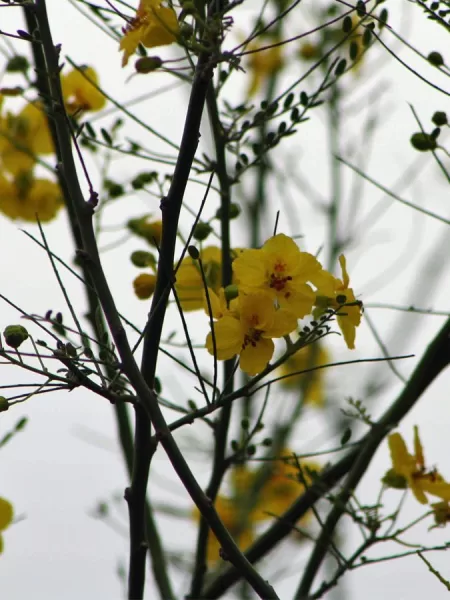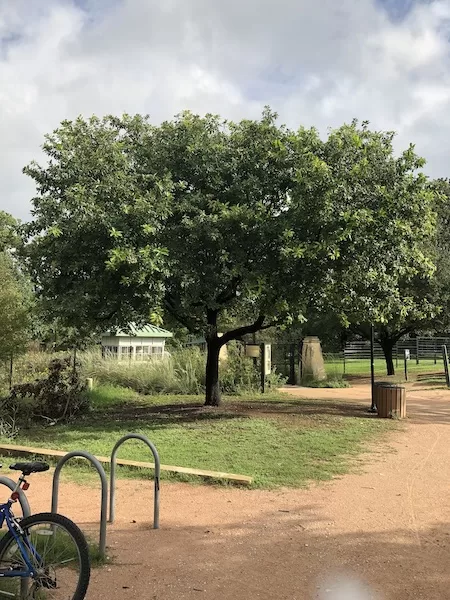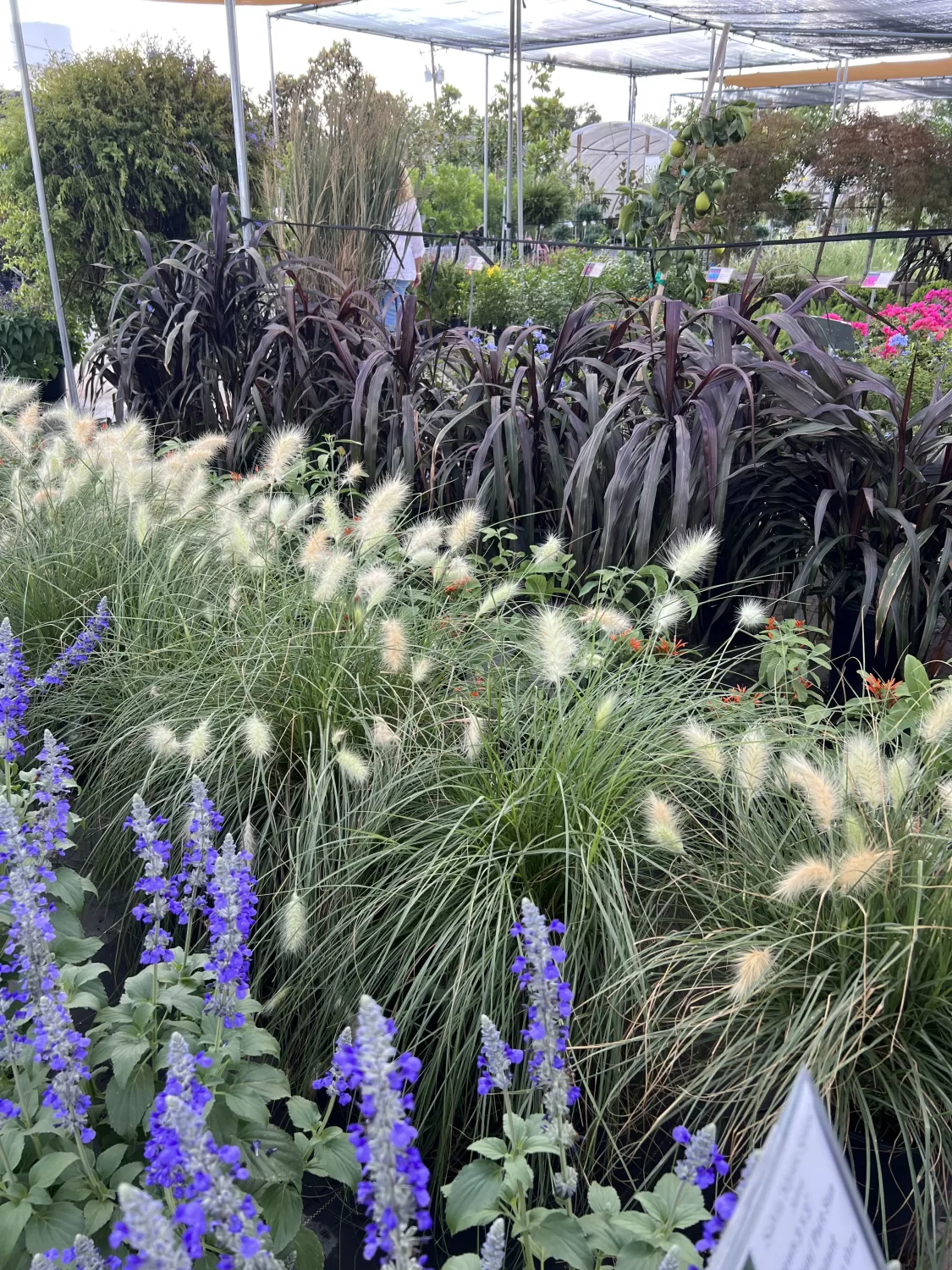
The Palo Verde ‘Desert Museum’ , Cercidium, have been getting a lot of attention lately here in Austin, Texas, and for good reason! They are loaded with bright yellow blooms which are simply stunning and are quite visible from far away. Palo in Spanish means stick and verde means green. The name green stick I would imagine is due to the fact that the bark is a bright green in color which in itself is quite unique.
The ‘Desert Museum’ is the most popular variety. The Palo Verde are deciduous, drought tolerant, wonderful, fast-growing trees. They bloom an abundance of yellow flowers throughout the year. In addition to the blooms and bark, they have a beautiful wispy and architectural look. Excellent as accent trees even when they are not blooming. They can reach heights of 20 – 25 feet and can be pruned to be more upright if preferred.
What is the difference between the Retama and the ‘Desert Museum’?
The Retama is a tree which looks similar and if often mistaken for the ‘Desert Museum’. The Retama is commonly confused with the Palo Verde as it also blooms yellow flowers and has green bark, the main difference between the two is the Retama has thorns all over it and the Retama is a Texas native. The leaves of the Palo Verdes are more compact and resemble the leaves of a Mimosa tree while the Retama leaves, though they resemble the Mimosa leaves, are a bit longer. To the casual observer they are quite similar aside from the thorns and the Retama tends to have a more natural free look while the Palo Verde has a more classic shape and form.
The Palo Verde is an excellent choice for Austin, Texas. They prefer full sun and well-drained soil. When planning your landscape make sure to select plants with similar water requirements.
Beautiful combinations include the Salvia greggii in red or purple, ‘Mystic Spires’ Salvia, a personal favorite. The bright blue blooms look beautiful planted alongside the ‘Desert Museum’. It’s a good idea to put in a few evergreens like the Dwarf Yaupon Holly for example. In addition, an option is to pair with Agaves and desert loving plants. Examples include the Parryi truncata, Artichoke Agave, Queen Victoria Agave, Candellia and various Dasylirion and Sotols. These are all low water-once established, easy to care for, drought tolerant and can take the full Texas sun.
However, you choose to plant your tree whether it be standing alone or alongside perennials and shrubs, the Palo Verde is an excellent choice for height, blooms and architectural interest.

We have a video on YouTube featuring this wonderful tree.
SaveSave
SaveSave
SaveSave
SaveSave



